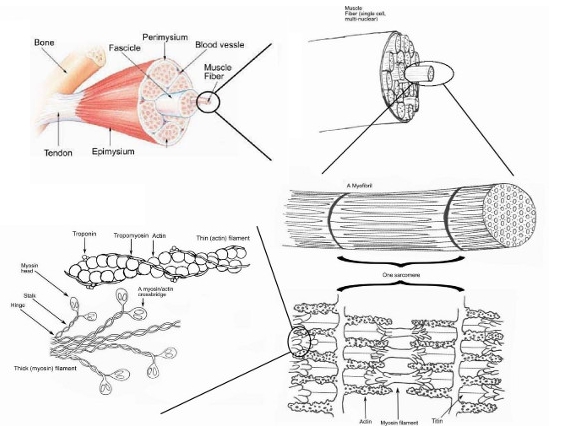How human muscles sound
According to Wikipedia “Muscle (from Latin musculus, diminutive of mus “mouse”) is the contractile tissue of animals… Muscle cells contain contractile filaments that move past each other and change the size of the cell. They are classified as skeletal, cardiac, or smooth muscles. Their function is to produce force and cause motion. Muscles can cause either locomotion of the organism itself or movement of internal organs.”

Top down view of skeletal muscle | Photo montage created by Raul654 | Wikimedia
What is not mentioned here is that the force produced by muscles causes sound too.
When filaments move and stretch they actually vibrate, therefore they create sound. Muscle sounds have a frequency between 5Hz and 45Hz, thus they can be captured with a highly sensitive microphone.
A sample of sounding muscle is available here, thanks to the Open Prosthetics research group (whose banner reads “Prosthetics shouldn’t cost an arm and a leg”).
In fact muscle sounds have mostly been studied in the field of Biomedical Engineering as alternative control data for low cost, open source prosthetics applications and it’s thanks to this studies that I could gather precious technical information and learn about several designs of muscles sounds sensor devices.
Most notably the work of Jorge Silva at Prism Lab is being fundamental for my research. His MASc thesis represents a comprehensive resource of information and technical insights.
The device designed at Prism Lab is a coupled microphone-accelerometer sensor capable of capturing the audio signal of muscles sounds. It also eliminates noises and interferences in order to precisely capture voluntary muscle contraption data.
This technology is called mechanical myography (MMG) and it represents the basis of my further musical and performative experimentations with the sounding (human) body.
I just ordered components to start implementing the sensor device, so hopefully in a week or two I’ll be able to hear my body resonating.

